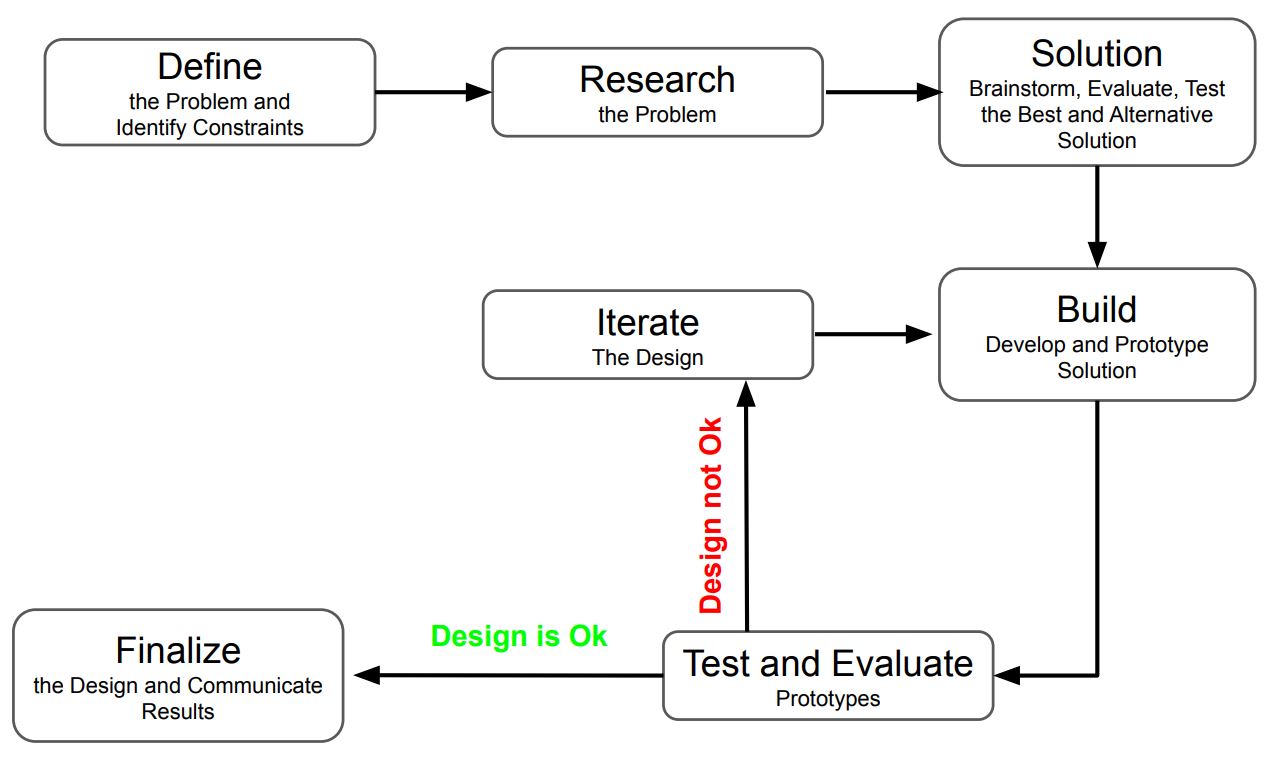What is Engineering Design Process?
The engineering design process is an iterative method involving a series of activities to guide engineering teams and solve complex engineering problems.
The product design teams use the engineering design process during the design and development of new products. It is different from the scientific method that involves making observations by doing experiments.
Steps of Engineering Design Process?
The engineering design process involves various steps from problem definition to prototyping, testing, and evaluation. Not all engineers or companies follow all of these steps. But the ultimate goal is to solve the problem iteratively.
The engineering design process has the following steps.
- Define the problem and identify the constraints.
- Research the problem.
- Brainstorming, evaluation, and possible solution selection.
- Develop and prototype the solution.
- Test and evaluate the prototype.
- Redesign: Iterate and improve the design according to prototype testing results.
- Finalize the design and communicate the results.

Let’s discuss the above engineering design process steps in detail.
1. Define the Problem and Identify Constraints
The first engineering design process step is to identify and define the problem. During the definition of a problem, the team considers the constraints such as available knowledge, finance, and resources.
For example, during covid19, the problem is to save people’s lives from pandemics. You can solve this problem by making a vaccine, hand sanitizers, masks, PPE Kit, sanitizer dispensing machines, Infrared thermometer or oximeter, etc.
A medical company can solve the problem by manufacturing vaccines or medicines. Whereas engineering companies can contribute by designing smart devices such as sanitizer dispensing machines, Artificial Intelligence based mark detection software or body temperature sensor
2. Research the Problem
Research is a critical part of the engineering design process. It involves activities such as understanding your customer and existing similar solutions available in the market.
For example, if you decide to build a temperature sensor to measure human body temperature. Firstly you need to find the available technologies with the required accuracy to fulfill your customer requirements.
3. Solution : Brainstorm, Evaluate, Test the Best and Alternative Solution
We can develop a solution for the identified problem in the following steps:
- Finalize Requirements
- Brainstorm Idea’s
- Select the best solution
Finalizing solution requirements sets the scope of the project. This step involves deciding product specifications and features.
A problem can have multiple solutions. Engineers brainstorm different ideas and technologies to solve the problem.
After brainstorming, the team explores various alternative solutions fulfilling product requirements. Afterward, engineers start work on the detailed design of the finalized solution.
For example, to design a temperature sensor. Firstly, the product designer finalizes temperature sensor specifications such as accuracy, size constraints, usability, and aesthetics. Afterward, engineers brainstorm multiple technologies to sense the temperature and select one or multiple solutions.
4. Build : Develop and Prototype the Solution
The engineering team starts work on the detailed design of the selected solution. During this phase, the engineering team develops each block of the solution and analyzes the solution in detail.
Afterward, the team develops working models of the solution with limited functionality. Click this link to know rapid prototyping techniques for plastic parts.
5. Test and Evaluate Prototype Solution
The next step is to test and evaluate prototypes as per product specifications and their functional & standard requirements.
Afterward, the team evaluates the testing results and decides on any change in design.
6. Iterate the Solution
During design iterations, the team updates the solution according to the feedback from the prototype testing. Building (Developing and prototyping) and redesigning the solution cycle continues until we get the final solution.
Simulation tools and brainstorming different ideas can reduce the number of iterations. Team efforts shall always be to achieve the solution with zero iterations.
7. Finalize Results and Communicate the Solution
Finally, solutions meeting design specifications and functional requirements are productized and used to solve real-life problems.
We will keep adding more information on the steps in Engineering Design Process`. Please add your suggestions, comments, or questions on Engineering Design and development Process in the comment box. We suggest you also read this article on various types of machining operations.

Add a Comment